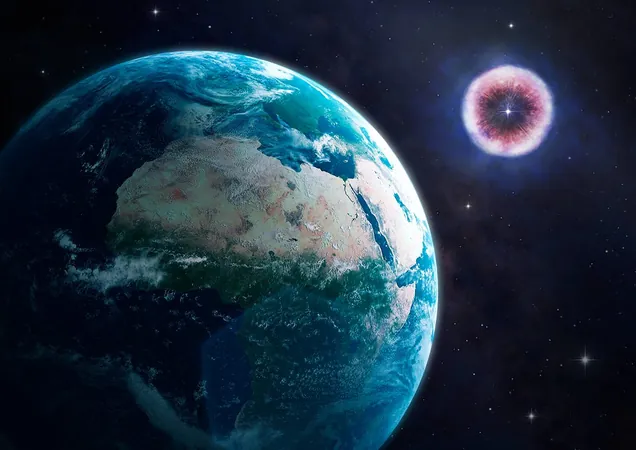
Could Betelgeuse's Supernova Spell Doom for Earth? Unraveling the Threat of Stellar Explosions
2025-05-09
Author: Wei Ling
Is Betelgeuse on the Brink of an Explosive End?
Astronomy enthusiasts are buzzing with anticipation about Betelgeuse, the iconic red giant star in Orion that many speculate is primed for a supernova explosion. The question looms: if this stellar titan detonates, could it pose a threat to life on Earth?
A Cosmic Countdown: The Nature of Betelgeuse's Fate
Betelgeuse, situated about 642 light-years away, is nearing the end of its lifecycle, which could see it explode any time in cosmic terms—a timescale that runs up to 100,000 years. While that might seem like a long way off, the potential consequences of such an event are both thrilling and terrifying.
The Link Between Supernovae and Mass Extinctions
Recent research indicates that past supernovae might have played a catastrophic role in Earth's history, leading to two significant mass extinction events. Scientists from Keele University explored the frequency of supernovae occurring within 3,260 light-years of Earth and uncovered alarming possibilities.
What Happens During a Supernova?
A supernova is triggered when a massive star exhausts its nuclear fuel and collapses, resulting in a spectacular explosion that ejects radiation and stellar material across the cosmos. "These explosions release heavy elements into space, which can potentially spawn new stars and planets," explains Alexis Quintana, who led the ground-breaking study. "However, if a planet like Earth is too close when it occurs, the fallout can be dire."
Potential Dangers to Earth
If a supernova were to occur nearby, its radiation could obliterate our planet's ozone layer, exposing life to harmful ultraviolet rays and triggering prolonged periods of acid rain. By analyzing nearby massive stars, Quintana's team projected that approximately 2.5 supernovae occur within a concerning range every billion years.
A Chilling Correlation with Extinction Events
This supernova frequency aligns ominously with historical extinction events, such as the Devonian extinction 372 million years ago and the Ordovician extinction 445 million years ago. Both events featured significant decreases in ozone levels, leading scientists to reconsider their origins.
Lucky for Us: Distance Matters!
Thankfully, the only two stars expected to go supernova in the coming millions of years—Betelgeuse and Antares—are both over 500 light-years away, making them relatively harmless to our delicate atmosphere.
Could Supernovae Actually Benefit Life?
Why do we find ourselves fascinated by cosmic catastrophes? From the impending demise of Betelgeuse to the infamous asteroid threats, our attention is often drawn to the possibility of disaster from outer space. But, interestingly, some researchers argue that supernovae could be beneficial, possibly initiating solar system formation or paving the way for ecological booms after extinction events. Even the asteroid that wiped out the dinosaurs was a catalyst for mammalian evolution.
Understanding Earth’s history requires a deep dive into our cosmic neighborhood. As we gaze into the cosmos, we uncover not just threats, but the potential for new beginnings.


 Brasil (PT)
Brasil (PT)
 Canada (EN)
Canada (EN)
 Chile (ES)
Chile (ES)
 Česko (CS)
Česko (CS)
 대한민국 (KO)
대한민국 (KO)
 España (ES)
España (ES)
 France (FR)
France (FR)
 Hong Kong (EN)
Hong Kong (EN)
 Italia (IT)
Italia (IT)
 日本 (JA)
日本 (JA)
 Magyarország (HU)
Magyarország (HU)
 Norge (NO)
Norge (NO)
 Polska (PL)
Polska (PL)
 Schweiz (DE)
Schweiz (DE)
 Singapore (EN)
Singapore (EN)
 Sverige (SV)
Sverige (SV)
 Suomi (FI)
Suomi (FI)
 Türkiye (TR)
Türkiye (TR)
 الإمارات العربية المتحدة (AR)
الإمارات العربية المتحدة (AR)